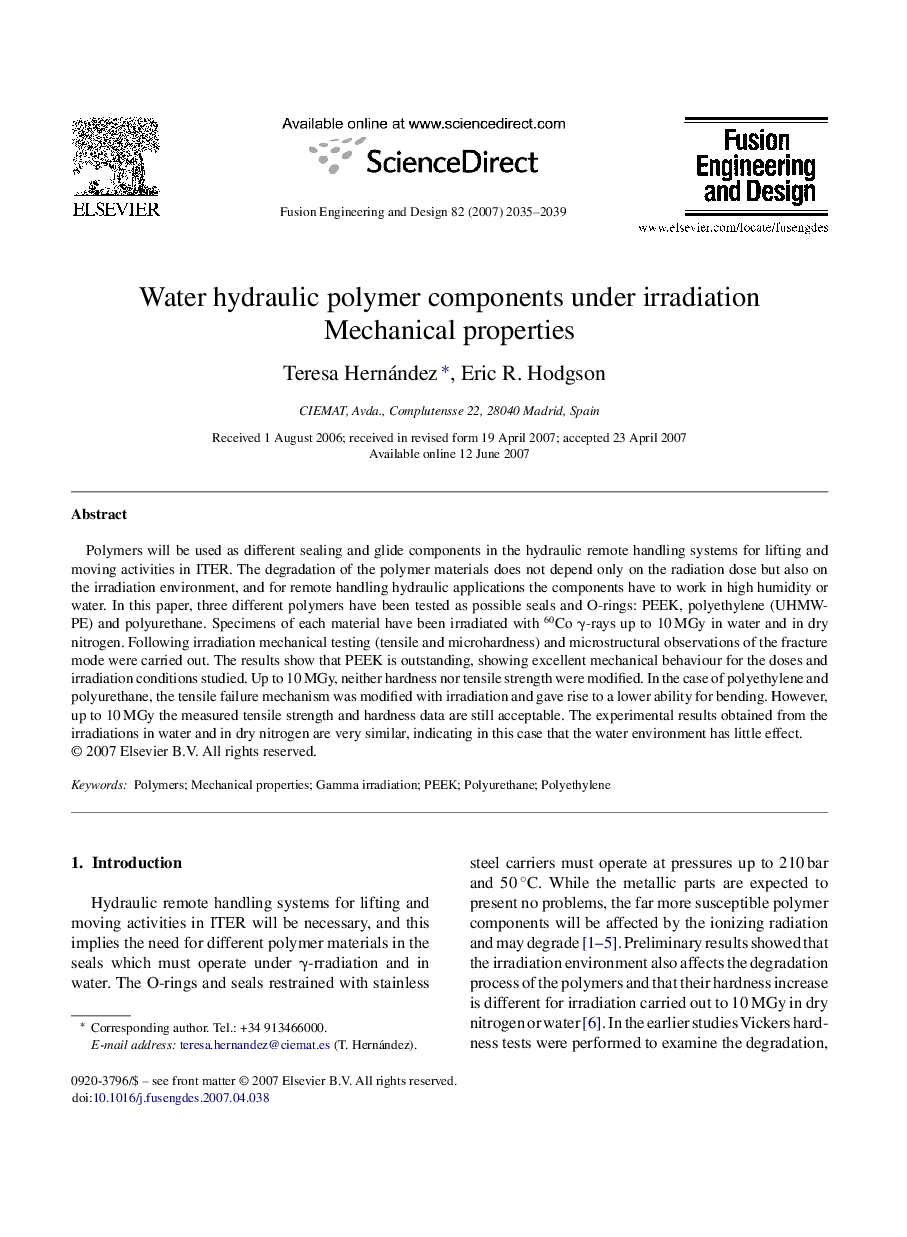| Article ID | Journal | Published Year | Pages | File Type |
|---|---|---|---|---|
| 273602 | Fusion Engineering and Design | 2007 | 5 Pages |
Polymers will be used as different sealing and glide components in the hydraulic remote handling systems for lifting and moving activities in ITER. The degradation of the polymer materials does not depend only on the radiation dose but also on the irradiation environment, and for remote handling hydraulic applications the components have to work in high humidity or water. In this paper, three different polymers have been tested as possible seals and O-rings: PEEK, polyethylene (UHMW-PE) and polyurethane. Specimens of each material have been irradiated with 60Co γ-rays up to 10 MGy in water and in dry nitrogen. Following irradiation mechanical testing (tensile and microhardness) and microstructural observations of the fracture mode were carried out. The results show that PEEK is outstanding, showing excellent mechanical behaviour for the doses and irradiation conditions studied. Up to 10 MGy, neither hardness nor tensile strength were modified. In the case of polyethylene and polyurethane, the tensile failure mechanism was modified with irradiation and gave rise to a lower ability for bending. However, up to 10 MGy the measured tensile strength and hardness data are still acceptable. The experimental results obtained from the irradiations in water and in dry nitrogen are very similar, indicating in this case that the water environment has little effect.
